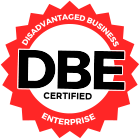Why were some homes in Hurricanes Helene and Milton heavily damaged while others sustained little or no damage? Much of the answer lies with the building materials and techniques used in their construction.
Former Florida Deputy Insurance Commissioner Lisa Miller talks with a building science researcher, a building products manufacturer, and a developer whose homes survived unscathed from the hurricanes about how resilient construction can save money and insurance costs for both new and existing homes.

Fred Malik, Managing Director, Fortified program at the Insurance Institute for Business and Home Safety

Marshall Gobuty, Managing Partner, Pearl Homes Developments

Scott Lidberg, CEO, NEXGEN Building Products
Show Notes
Host Lisa Miller opened the discussion by highlighting the devastation caused by recent Hurricanes Helene and Milton, particularly in Florida. She emphasized the urgent need for homeowners to prepare their properties to withstand such disasters. “Everywhere I go in Florida, I see homes built with plywood and two-by-fours, and I affectionately say that these production homes are built with sticks. I don’t see how they withstand 150 mph winds,” said Miller, who is a disaster insurance and recovery expert. The focus of the episode is on using innovative building products and techniques to enhance the resilience of homes.
Fred Malik’s Insights on Building Standards
Fred Malik, Managing Director of the Fortified Program at the Insurance Institute for Business and Home Safety (IBHS), shared his expertise on building techniques and materials designed to minimize damage from natural disasters. He stressed the importance of rigorous building standards and inspections, noting that “you get what you inspect, not what you expect.” Malik explained that homes built to the Fortified standard undergo thorough third-party inspections, ensuring that critical details are not overlooked. This certification process provides consumers with a way to differentiate between homes that may appear similar but have vastly different levels of resilience against severe weather.
Malik’s key points include:
- Fortified Program Levels: The Fortified Program has three levels of designation—Roof, Silver, and Gold. These designations help homeowners understand the improvements they can make to their existing homes or new constructions.
- Focus on the Roof: Malik emphasized that focusing on the roof is crucial, as it is often the first area to sustain damage during a storm. Upgrading roofing materials and ensuring proper installation can significantly reduce the risk of damage.
- Comprehensive Testing: The IBHS has a state-of-the-art facility in South Carolina where it conducts tests on homes subjected to extreme weather conditions. This allows researchers to identify vulnerabilities in building designs and develop solutions to address them.
Marshall Gobuty’s Approach to Resilient Housing
Marshall Gobuty, Managing Director at Pearl Homes Developments, shares his firsthand experience with building resilient homes. He discusses his development, Hunter’s Point in Cortez, Florida, which successfully withstood Hurricane Milton without any damage. Gobuty attributes this success to his innovative building practices, which include using a combination of block and poured concrete for foundations, as well as advanced insulation techniques that enhance the structural integrity of the homes.
Gobuty’s key points include:
- Innovative Building Practices: Gobuty’s homes incorporate features like standing seam steel roofs and elevated foundations, designed to withstand not only hurricanes but also flooding.
- Sustainability and Resilience: His homes are designed to be energy-efficient and resilient, incorporating features like solar panels and battery storage systems to ensure power availability during outages.
- Workforce Housing: Gobuty emphasizes the need for affordable, resilient homes for all residents, not just those who can afford luxury properties. He has several such projects in the works with the city of Bradenton, Florida.
He responded to Miller’s earlier comment about seeing homes being built with sticks. “I think that what you’re looking at is, when you drive by these places, you’ll see timber, and then you’re going to see Tyvek stapled on the outside. So that’s just the worst thing anyone can possibly do, because all they’re doing is meeting code. And if you’re meeting code, all you’re doing is not going to jail, because you have a job to do and meet code, but you’re doing nothing, nothing exceptional to make the home better for you, for the homeowner, and for sustainability itself, and for the environment,” Gobuty said.
Scott Lidberg’s Innovative Building Materials
Scott Lidberg, CEO of NEXGEN Building Products, introduced his company’s innovative magnesium oxide-based building materials. He explained how these products can replace traditional materials like plywood and gypsum, offering superior resistance to impact, moisture, and fire.
Lidberg’s key points include:
- Magnesium Oxide-Based Products: These materials are highly impact-resistant, non-combustible, and moisture-resistant, making them ideal for use in hurricane-prone areas.
- Long-Term Benefits: Lidberg highlighted the long-term benefits of using such materials, including reduced maintenance costs and improved safety for homeowners.
- Cost vs. Value: While there may be a slight premium in cost, the long-term savings from repair and insurance costs, plus the benefits far outweigh the initial investment.
“Pick an area of the country that doesn’t have their own unique issues with Mother Nature,” Lidberg noted. “If we just start adopting these practices as a whole and get away from the disposable home type concept, I think we’ll all be much better.”
The Importance of Collaboration and Innovation
Throughout the conversation, Miller and her guests emphasized the importance of collaboration among builders, manufacturers, and researchers to create resilient housing solutions. Malik noted that the IBHS is “material-agnostic,” meaning it is open to exploring various building practices and materials to find the most effective solutions for homeowners.
The key points on this include:
- Community Engagement: Malik advocates for leveraging available resources, such as those provided by the Fortified program, to empower individuals to make informed decisions about their homes.
- National Adoption: Gobuty expressed a desire for national home builders to adopt resilient construction methods, suggesting that even a small percentage of homes built with these standards could make a significant impact and start a trend.
- Policy and Education: Miller and guests discussed the need for community engagement and education, urging homeowners to take action and not become complacent in the face of natural disasters.
A Vision for the Future
As the episode concluded, Malik, Gobuty, and Lidberg reflected on the importance of building homes that can endure the challenges posed by natural disasters. They expressed optimism about the future of resilient housing in Florida, driven by innovation, collaboration, and a commitment to sustainability.
The call to action from Host Miller:
- Invest in Resilience: Homeowners are encouraged to consider the importance of building resilience in their own homes. By investing in innovative building products and techniques, they can protect their properties, save on property insurance costs, and ensure a safer future for their families.
- Engage with Communities: Listeners are urged to engage with their local communities, support innovative building practices, and advocate for better building standards.
“Wind is everywhere, just like floods are everywhere, and we talked a lot about how do we get communities to recognize that they should require the builders in their community to follow Marshall’s model,” said Miller. By taking these steps, she noted, homeowners can contribute to a safer and more sustainable future for all.
Links and Resources Mentioned in this Episode
Insurance Institute for Business and Home Safety
Hurricanes Spotlight Need for Resilient Construction (LMA Newsletter of October 28, 2024)
Miracle neighborhood that survived Hurricane Helene without a scratch (Daily Mail, October 2, 2024)
Subscribe to the LMA Newsletter and The Florida Insurance Roundup podcast (free)
** The Listener Call-In Line for your recorded questions and comments to air in future episodes is 850-388-8002 or you may send email to LisaMiller@LisaMillerAssociates.com **
The Florida Insurance Roundup from Lisa Miller & Associates, brings you the latest developments in Property & Casualty, Healthcare, Workers’ Compensation, and Surplus Lines insurance from around the Sunshine State. Based in the state capital of Tallahassee, Lisa Miller & Associates provides its clients with focused, intelligent, and cost conscious solutions to their business development, government consulting, and public relations needs. On the web at www.LisaMillerAssociates.com or call 850-222-1041. Your questions, comments, and suggestions are welcome! Date of Recording 10/21/2024. Email via info@LisaMillerAssociates.com Composer: www.TeleDirections.com © Copyright 2017-2024 Lisa Miller & Associates, All Rights Reserved


